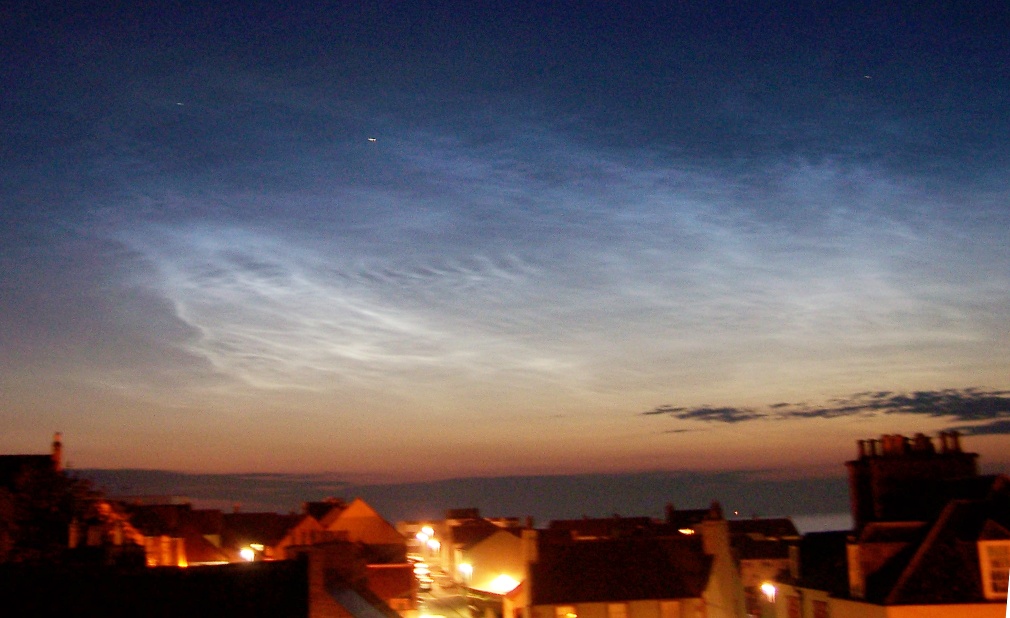The 2013 noctilucent cloud (NLC) season has definitely kicked off; I staggered out of the pub last night to find the twilight arch full of this splendid display. For readers who have not heard of these clouds before, they are at an altitude of 82km, on the edge of space, and several times higher up than any other sort of cloud. (This region is called the mesopause; it is at the top of a layer called the mesosphere.) They are visible for a short season, approximately from two weeks before the summer solstice until four weeks afterwards. Keen observers look for them every year and report them to the observers’ homepage. I’m not that obsessive, but I do look out for them, partly because some of my research in the past has been on water vapour at these altitudes. And because they are beautiful to look at. Some years have gone by without my seeing them at all, so it is nice to have spotted them right at the beginning of the season.
The pub out of which I staggered is the Volunteer Arms in Dunbar, East Lothian. Central Scotland is actually one of the best regions in the world from which to see noctilucent clouds. They are a polar phenomenon, so they get commoner as you go towards the pole. But if you go too far you find that for the entire NLC season there is no night in which to see them. And you need some night; the reason that we can see the clouds, even though they are so thin, is that the sun is still shining at 82km, so the clouds are sunlit, but our surroundings are dark.
The satellite instrument that I am currently working on (MLS) measures both temperature and water vapour throughout the stratosphere and mesosphere. I have set up an automatically-updated plot using these data to show how cold and wet the mesopause over Britain is. This year looks a bit wetter than most of the last few years; odd, given that we are near a maximum of the sunspot cycle.



One Reply to “Noctilucent cloud season begins”